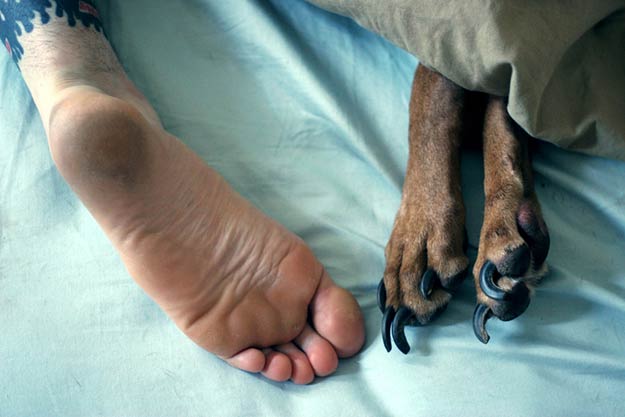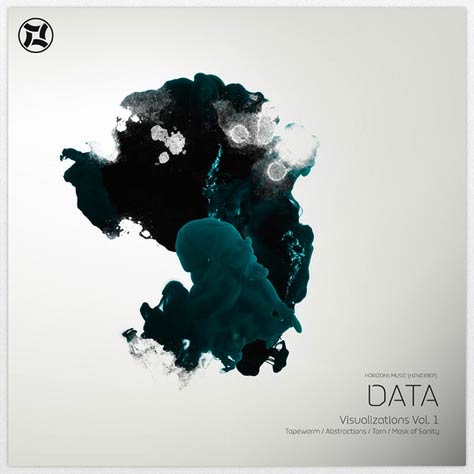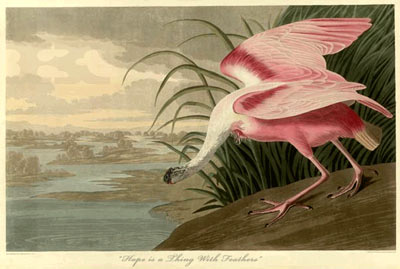animals
High brown boots with laces dangling. Well turned foot. What is he fostering over that change for?

…Mr. Sibayan’s prize was the equivalent in the world of rarefied coffees: dung containing the world’s most expensive coffee beans.
Costing hundreds of dollars a pound, these beans are found in the droppings of the civet, a nocturnal, furry, long-tailed catlike animal that prowls Southeast Asia’s coffee-growing lands for the tastiest, ripest coffee cherries. The civet eventually excretes the hard, indigestible innards of the fruit — essentially, incipient coffee beans — though only after they have been fermented in the animal’s stomach acids and enzymes to produce a brew described as smooth, chocolaty and devoid of any bitter aftertaste.
As connoisseurs in the United States, Europe and East Asia have discovered civet coffee in recent years, growing demand is fueling a gold rush in the Philippines and Indonesia, the countries with the largest civet populations.
photo { Christophe Kutner }
‘The shortness of life, so often lamented, may be the best thing about it.’ –Schopenhauer

An ‘immortal’ jellyfish is swarming through the world’s oceans, according to scientists.
Since it is capable of cycling from a mature adult stage to an immature polyp stage and back again, there may be no natural limit to its life span. Scientists say the hydrozoan jellyfish is the only known animal that can repeatedly turn back the hands of time and revert to its polyp state (its first stage of life).
photo { Jackson Eaton }
Oh - and got biz-zay! It’s a whole family of supers! Looks like I hit the jackpot! Oh, this is just too good!

{ Laura Taylor }
‘If winning isn’t everything, why do they keep score?’ –Vince Lombardi

{ Read more | 5W Infographics }
‘A great part of courage is the courage of having done the thing before.’ –R. W. Emerson

{ Leda and the Swan, copy after a lost painting by Michelangelo, c. 1530 }

{ François Boucher, Leda and the Swan, 1741-1742 | Read more }

{ François Boucher, Leda and the Swan, c. 1740 }

{ Leda and the Swan, Scindia museum, Gwalior }

{ Leda and the Swan by Norman Parkinson, 1980s }
Leda and the Swan is a motif from Greek mythology, in which Zeus came to Leda in the form of a swan.
The subject undoubtedly owed its sixteenth-century popularity to the paradox that it was considered more acceptable to depict a woman in the act of copulation with a swan than with a man.
Leonardo da Vinci began making studies in 1504 for a painting, apparently never executed, of Leda seated on the ground with her children. In 1508 he painted a different composition of the subject, with a nude standing Leda cuddling the Swan, with the two sets of infant twins, and their huge broken egg-shells.
After something of a hiatus in the 18th and early 19th centuries (apart from a very sensuous Boucher), Leda and the Swan became again a popular motif in the later 19th and 20th centuries, with many Symbolist and Expressionist treatments.
Cy Twombly executed an abstract version of Leda and the Swan in 1962.
{ Wikipedia | Continue reading | Bonus: Doggie style by Fred Inaudi }
But when you hear his engines, you’re lookin’ through the window in the kitchen and you know, you’re always gonna be there when he calls

A pesticide that is used around the world can turn male frogs into egg-producing females, a new study has shown.
The pesticide, atrazine, has infiltrated water supplies and can travel to areas hundreds of kilometers from the place where it was originally used. Some research has suggested that atrazine can affect the development of amphibians, but these findings have been disputed.
Queen: Dip the apple in the brew. Let the Sleeping Death seep through. [the poison on the apple forms a skull]

Australia’s vile and poisonous plague of cane toads may finally have met its match — and it comes in a tin of cat food.
After years spent trying to batter, gas, run over and even freeze the toxic toads out of existence, scientists say just a dollop of Whiskas could stop the warty horde.
The cat food attracts Australia’s carnivorous meat ants, which swarm over and munch on baby toads killing 70 percent of them.
{ AFP/Physorg | Continue reading }
The most poisonous animal substance is batrachotoxin, produced by the poison arrow frog of South America. As little as the weight of two grains of table salt will turn your lights out for good.
{ What’s the fastest-acting, most lethal poison? | The Straight Dope | Continue reading }
Seven days in sunny June

It is amazing that out of the countless trillions of ways molecules can be arranged, only a few million ways result in things that can reproduce themselves.
The biologist E.O. Wilson estimates there are about 13 million species, broken down as follows:
Insects 9 million
Bacteria 1 million
Fungi 1 million
Viruses 0.3 million
Algae 0.3 million
Worms 0.3 million
Plants 0.2 million
Protozoa 0.2 million
Echinoderms 0.2 million
Mollusks 0.2 million
Crustaceans 0.2 million
Fish 30 thousand
Reptiles 10 thousand
Birds 10 thousand
Amphibians 5 thousand
Mammals 5 thousandIt has been estimated that since the Pre-Cambrian Explosion 540 million years ago, during which the predecessors of most of these species arose, upwards of 90% of all species are extinguished each 100 million years due to environmental catastrophes. Hence, even counting the ways life might have been organized in the distant past, not more than a few hundreds of millions of molecular patterns have worked.
In comparison, a practically infinite number of molecular patterns are possible given the dozens of atomic building blocks nature has to work with and the astronomical number of possibilities for stringing these atoms together in three-dimensional space. (…)
Life owes its improbable existence to an exceedingly rare kind of code. This life-code does two things unique to life.
First, it enables self-replicating order to be structured out of disorder. Second, it enables that order to be maintained (for a while) against all the forces that make things fall apart. Wow yourself with this: life-codes are merely a mathematical sequence, like a formula, that shazam-like transforms randomness into purpose and entropy into organization.
{ Martine Rothblatt, Will Uploaded Minds in Machines be Alive? | Institute for Emerging Ethics and Technology | Continue reading }
photo { Garry Winogrand }
To what he replied, It’s late I should miaow
Graduates prefer cats. According to press reports of research at the University of Bristol, households with graduates are 36 per cent more likely to have cats than their academically uninstructed counterparts. Most reports attribute the difference to discrepant brain power. “Clever people are more likely to own cats than dogs,” says the Press Association version of the findings.
The newspapers have diffused the same message. Jane Murray, who led the research, is credited with a rival explanation: “It could be related to longer working hours,” which leave graduates with less time to care for pets than the implicitly idle dog-lovers. (…)
I like cats. (…) The real difference between cat-lovers and dog-lovers has nothing to do with income, education or habits of work. It is, I suspect, a matter of morals. Dog-lovers are good. Cat-lovers are morally indifferent or actively evil.
The notes of the bird continuous echoing
Corvids – crows, ravens, jays, and magpies – are well known to be among the most intelligent of birds. Along with parrots, corvids have been a frequent subject of avian intelligence studies. Experiments have documented problem-solving and tool use, both in the lab and in the wild. Many of the recent experiments have tested intelligence in New Caledonian Crows (Corvus moneduloides), but tests of Ravens (Corvus corax) and Rooks (Corvus frugilegus) have also found problem-solving capabilities. New Caledonian Crows are a common subect for research because they are known to use a variety of tools in the wild.
And a conversation over shrimp and lobster
For whatever reason–plane crash, riptide, sailing misadventure, a bad case of Ocean Fury–you find yourself in the middle of the sea with nothing but miles of water around you. And, to your horror, here comes that heavy string music and a circling fin slicing through the water.
Luckily, from multiple websites and news stories about shark survival you remember the Shark’s Achilles Heel: Punches to the face. Specifically, the tender nose area. You wind up to belt that fishy bastard in the schnoz, and make your testicles proud.
The Result: First let’s look at a shark. Can you find his nose? Yep, it’s that incredibly narrow point in front that drops precipitously into a slimy, downward sloping ramp right into his 5,000,000-toothed mouth.
Take into account the fact that you’re bobbing around in the water like a buoy full of meat, facing off against a lightning-quick predator with several million years of practice in eating things that punch it in the nose, and you’ll see that chances are your fist will just deflect down into that aforementioned gaping hole of teeth like Boba Fett into a Sarlacc Pit. Now if your plan to defeat the shark is too feed yourself to him until he grows tired of the taste of you, you’re off to a great start.
But experts say that even if you hit the shark-nose punching lottery, you won’t have scared him off, just dazed him, giving you a minute or so tops. Now, if this particular shark is suffering from ADD, then great: You’re in the clear now. He’s off to chase a shiny thing or update his twitter feed 82 times an hour. But if not, all you’ve done is managed to piss the shark off and give him a minute to ponder how revenge is a dish best served in a blood-filled bag resembling you.
{ 7 common survival tactics (that will get you killed) | Cracked | Continue reading }
related { Can a book teach you how to survive? }
Deciders for the lonely
Wolfie Blackheart is not an ordinary 18-year-old. She believes she is a wolf –technically, a werewolf– and so she wears a tail. She also wears a harness in case someone special wants to drag her around.
And last week, she used a pocketknife in her kitchen to decapitate a dog–already dead, according to Wolfie–that had been missing since Jan. 5.
Well, I’m Mike D and I’m back from the dead, chillin’ with pig pen down at Club Med

State Representative James Tokioka did some research and drafted a bill that prohibits catching, selling or even possessing walu in Hawaii.
“I talked [to] many people who sell fish, some of the hotel who [buys] fish, they are aware of it and they’re not buying it anymore,” said Rep. Tokioka.
Tokioka said people have shared their nightmares of severe diarrhea after consuming a large portion of the fish. The oily walu or Escolar contains a high-level of wax esters in its tissue that are beneficial to its deep-sea survival, but can be unkind to humans.
illustration { Mathias Schweizer,













